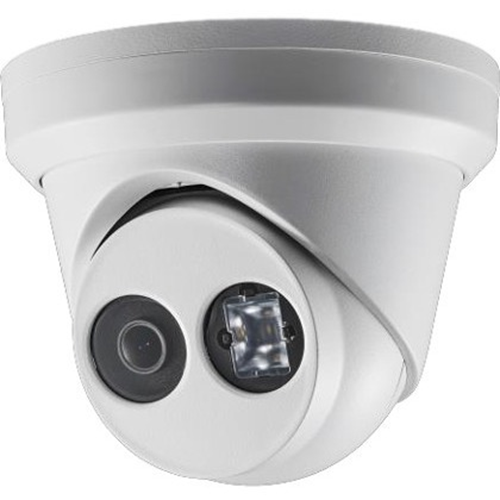
- June 6, 2022
- |CCTV
- | 0
- 1,294
Despite the many reliable doors and locks, everyone is still worried that a stranger may break into her house – especially when valuables are stored there. After all, you can’t be 100% sure that your home is well protected from burglars. But is it really?
Today, the market has video surveillance cameras that save from theft and intrusion. In general, these devices are not new – their appearance dates back to 1942. Then, 1951 was marked by the first video recorder. Becoming commercially available, the technology “merged” with the video surveillance system. As a result, people were able to record surveillance footage and view it later.
Today, video surveillance is so widespread that people take its internal work for granted. However, some are unaware of how CCTV cameras work. In this article we will talk about video surveillance. In particular, we will discuss the differences between analog and IP CCTV cameras, as well as the structure of devices.
How do CCTV cameras work in an analog system?
Like any other imaging device, analog CCTV cameras include sensors that capture video. The sensors may vary depending on the resolution, but usually it does not exceed 720 × 575 pixels. The CCTV camera captures videos at 60 intervals (or fields) and then transmits them to the DVR.
The structure of the analog system. The camera connects to the DVR using a single coaxial cable and a power cable. The signal is then transmitted from the camera to the DVR and ends with recording on the hard disk. In addition, the DVR allows you to transmit live video through a monitor. You can also send this signal to remote devices over the Internet. These include PCs, smartphones and tablets.
Analog video surveillance has been considered a universal standard for many years. This means that you can connect any analog CCTV camera to the DVR, regardless of brand. However, there are regional differences in analog video standards (PAL, SECAM and NTSC). However, cameras available in a particular region meet the standard. Despite this difference, some analog cameras and DVRs can work with any system. In fact, all you have to do is connect the cable to the cameras and connect them to the DVR.
Advantages of using an analog system. First of all, the technology is unpretentious in maintenance, as weekly inspections should be enough. Second, analog solutions are usually cheaper than IP options. In addition, you can watch footage at the current time without any delays. This is because video processing takes place inside the DVR, not the CCTV camera. Finally, most cameras are compatible with any digital video recorder, which makes it easy to upgrade and customize the solution.
How do IP CCTV cameras work?
The image sensor of the IP camera is similar to the sensor of an analog device. However, it transmits a video signal in the form of data over a network connection.
In essence, IP camera data is nothing more than compressed video. The camera uses a standard network protocol used by many computer applications, hence the name IP, or Internet Protocol. Simply put, an IP is an environment that transfers data between a home computer and the Internet. This means that this camera is a type of mini-computer with an operating system similar to a PC.
There is a significant advantage of using IP for data transmission. By using IP, users avoid the limitations of the broadcast standard. Theoretically, it is possible to go beyond the classic 720 × 575 pixels. But aren’t “megapixels” used to discuss camera performance? So how many megapixels in a 1280 × 720 camera? To get the resolution in megapixels, you need to multiply two numbers, which gives the sum of 921600. Then divide the result by one million, which gives about 0.9 million pixels – rounding this number, you get one megapixel.
The structure of the IP solution. Unlike the analog version, the structure of the network solution is somewhat more complex. A UTP cable is used instead of a coaxial cable. One end connects to the IP camera and the other to the POE switch. The network camera sends a digital signal to the IP video recorder. The NVR then either records or copies the video file directly from the camera. However, the transmission does not affect the image quality. This is because there is no conversion between analog and network solutions (and vice versa). If you need more accurate video surveillance, you can use a server instead of an NVR.
As soon as the DVR connects to the Internet, the cameras start live broadcast. As long as the connection is established, the authorized user can access the channel at any time, from anywhere.
Advantages of using an IP solution. A significant advantage of this solution is the best image quality. Although the analog system is capable of reproducing a maximum of 2 megapixels, modern IP CCTV cameras go far beyond 8mp-20mp. Thanks to the increased level of detail, detecting criminals will be much easier.
NVRs are also superior to DVRs in that they cover many additional features. You can also integrate an IP camera with a wireless network. This provides virtually limitless expansion options. Last but not least, IP systems will become the new standard for video surveillance over time, as analog solutions are gradually becoming obsolete.
Results
Surveillance cameras usually work with two technologies – analog and IP. Although the practical details of how they work may seem complicated, the principle of operation is actually quite simple. Whatever your choice, one thing is for sure – with video surveillance installed, security issues should be less of a concern.
If you need reliable protection, we can help you by installing a video surveillance system. Contact us and we will consult you, select the best video surveillance system, intercom, alarm system. 312-632-7543you, select the best video surveillance system, intercom, alarm system. 312-632-7543